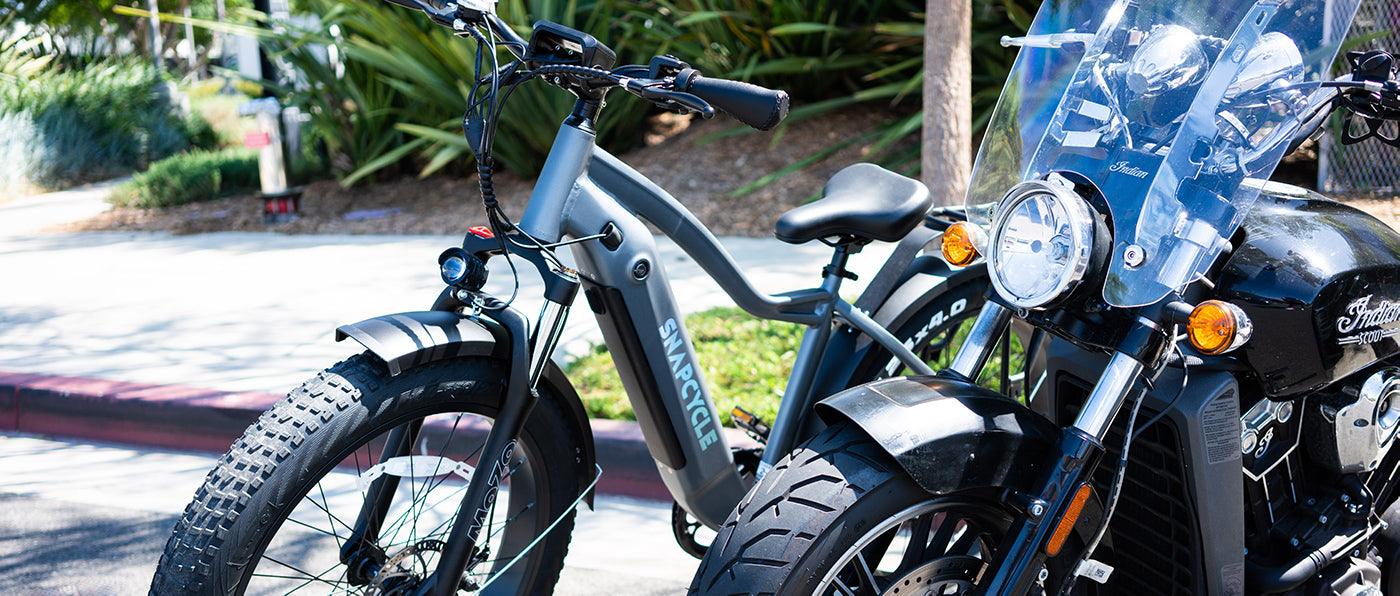What Are EBike Classes?
E-bikes have motors on them. Naturally, an ebike can have too much speed. Now, bikes don't have proper safety levels. That's why ebikes are not considered safe rides.
To avoid e-bike accidents, the US has classified ebikes into three categories. The categories are based on speed and driving mechanisms. So, before buying an e-bike you should know which ebike class suits you the best!
Different EBike Classes Explained
E-Bike Class 1
The class 1 e-bike is a pedal-assisted bike. The bike's motor will support you till 20 mph. Then, the motor will automatically cut its power. A pedal-assisted e-bike means you have to pedal your bike to activate the motor. The throttle won't work separately.
E-Bike Class 2
A class 2 e-bike is a throttle-assisted bike. But, the throttle will support only 20 mph top speed. A class 2 e-bike has a separate throttle control. So, you don't have to pedal your bike to activate the motor. Just twist the throttle and your e-bike will run fully on the motor.
E-Bike Class 3
Class 3 e-bikes can be called really speedy. These bikes can reach 28 mph speed. But, it's a pedal-assisted bike. Therefore, to activate the throttle, you have to pedal your bike.
Differences Between EBike Classes 1 2 3
Speed
The primary difference is speed. A class 1 and Class 2 e-bike can be driven at 20 mph. But, a class 3 e-bike can run at 28 mph.
Law
Ebikes are classified into three groups to avoid accidents. So, there are different types of laws regarding these ebikes.The Class 1 and Class 2 ebikes have low speed. That's why they are considered not so dangerous. You can ride these bikes on trails and sideways.
But, if you are riding a class 3 e-bike, then you can't ride on roadside paths or lanes. You have to ride on bike lanes or roads. Moreover, a Class 3 e-bike has age restrictions and you need to wear a helmet. However, Class 1 and Class 2 ebikes have mild restrictions.
Driving Mechanism
The biggest difference between class 1 and class 2 e-bike is their driving mechanisms. Class 1 is a pedal-assisted e-bike. Whereas class 2 e-bike is a throttle-assisted e-bike. Class 3 bikes have throttles. But, some states (like California) don't allow throttles on e-bikes.
The Reasons to Choose Class 2 E-Bikes
1) Fewer Law Restrictions
Class 2 e-bikes can go on trails or lanes. This e-bike falls into the category of ordinary bikes. So, it won't face strict law restrictions.
2) Fully Throttle-Assisted
Throttle-assisted bikes are so easy to drive. You don't have to pedal and you can ride on inclined areas. Apart from that, a throttle-assisted bike can help you to carry heavy things.
3) Safe Speed Limit
The speed limit of the class 2 e-bike is only 20 mph. As a result, you can drive this bike safely. You can also use the speed limiter option to control its speed.
4) Enjoy A Complete E-Bike Ride
An e-bike means driving on the ability of a powerful motor. A class 2 e-bike gives you every opportunity to enjoy an e-bike. So, to ride an e-bike in real way, you should choose a class 2 e-bike.
When Should You Choose A Class 3 EBike?
Class 3 E-bikes have a good speed level. You can have 28 mph on a class 3 E-bike. Naturally, class 3 E-bikes come with a powerful motor. So, you can take a class 3 e-bike on the mountain or hilly areas. Moreover, if you are a bike speed lover, then you would love a class-3 E-bike.
Class-3 E-bikes have a higher speed level. So, kids should ride them carefully. Only an adult should drive it. Furthermore, a class-3 E-bike should always be driven on the road. You can't use trails or sidewalks to ride this bike. Hence, you should have proper safety gear to ride the class-3 e-bike.
Rules You Should Follow/Know When Riding An EBike
1) An E-bike driver should always wear a helmet. If the driver is 17 or below 17 years, then he/she must wear a helmet.
2) You should never ride a class-3 E-bike on a bike path. But, you can do this with class 1 and class 2 E-bikes.
3) Many US states don't allow children to ride E-bikes. So, you should be at least 13 to drive an E-bike.
4) Some US states demand paid registration of E-bikes. In that case, you should find out whether your states have a registration fee or not.
5) An E-bike rider should always abide by the speed limit signs. Even, some narrow lanes don't allow e-bikes. If you are a responsible E-bike rider, then you should never fail to follow these signs.
6) The motor on your E-bike should never be heavier than 750 watts.
7) California has some strict rules regarding E-bikes. So, if you are going to buy an E-bike in California, then you should check your local laws.
8) Trails and sidewalk regulations can be different in some states. Moreover, some states demand that an E-bike should have a label displaying the class. Your bike should also display the highest speed and motor wattage.
The above rules regarding E-bikes are truly important. An e-bike owner must follow the rules mentioned by the state. Helmet, registration, speedometer, throttle, and more things should be perfect to ride an E-bike. Hence, don't forget to check out your local laws on E-bike classes.
Ebikes are truly getting popular. These bikes are fast and silent. Though, US states have different types of rules regarding e-bikes.
Some states demand licenses and some states have age restrictions. So, choose an E-bike carefully. Class 1 and Class 2 are good for commuters. But, if you want a speedy bike to climb mountains, then you should opt for class 3 e-bikes. However, an e-bike can give you freedom and you can have your own ride.
To find more Snapcycle ebikes, please visit us here:
https://snapcycle.com/collections/electric-bikes

